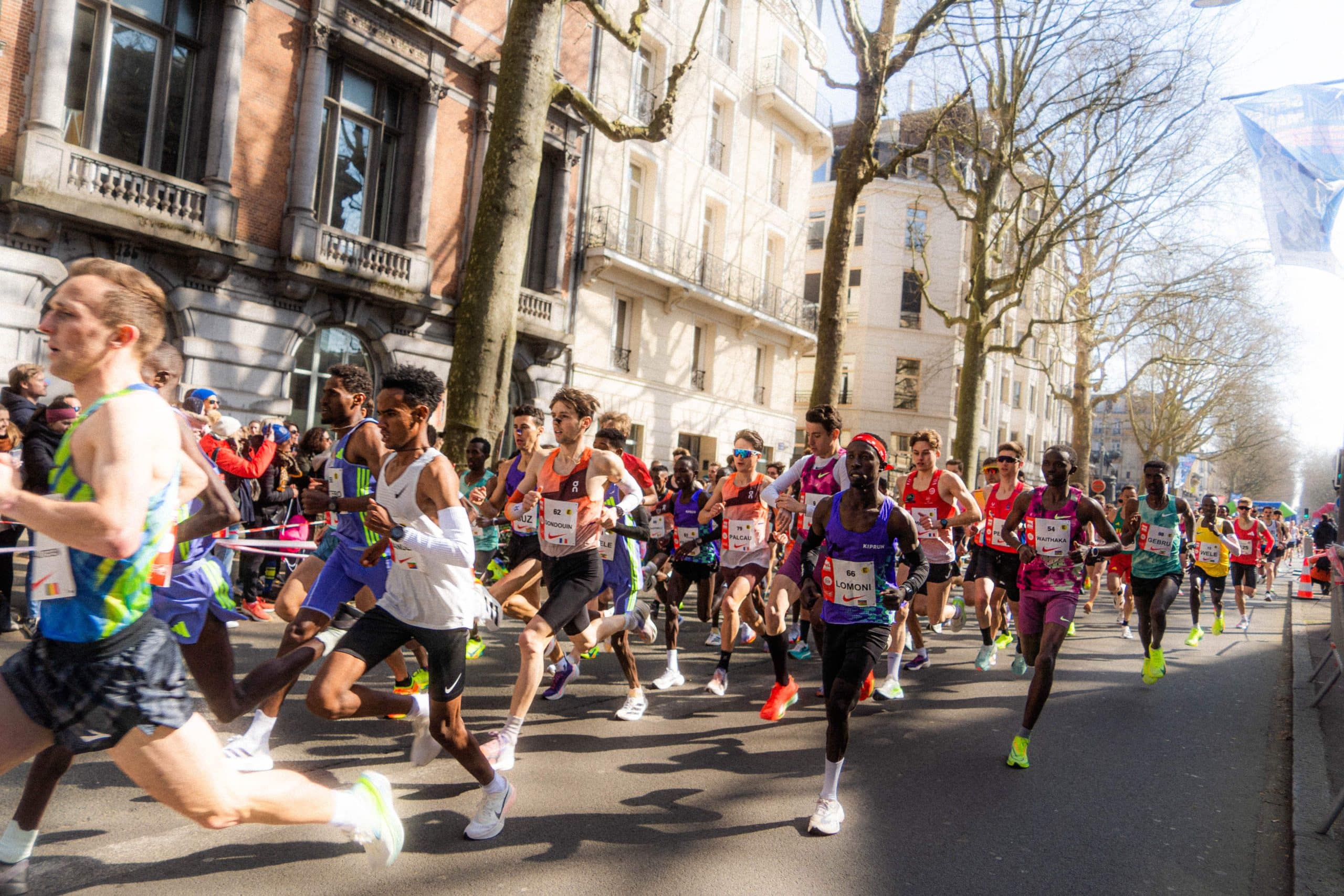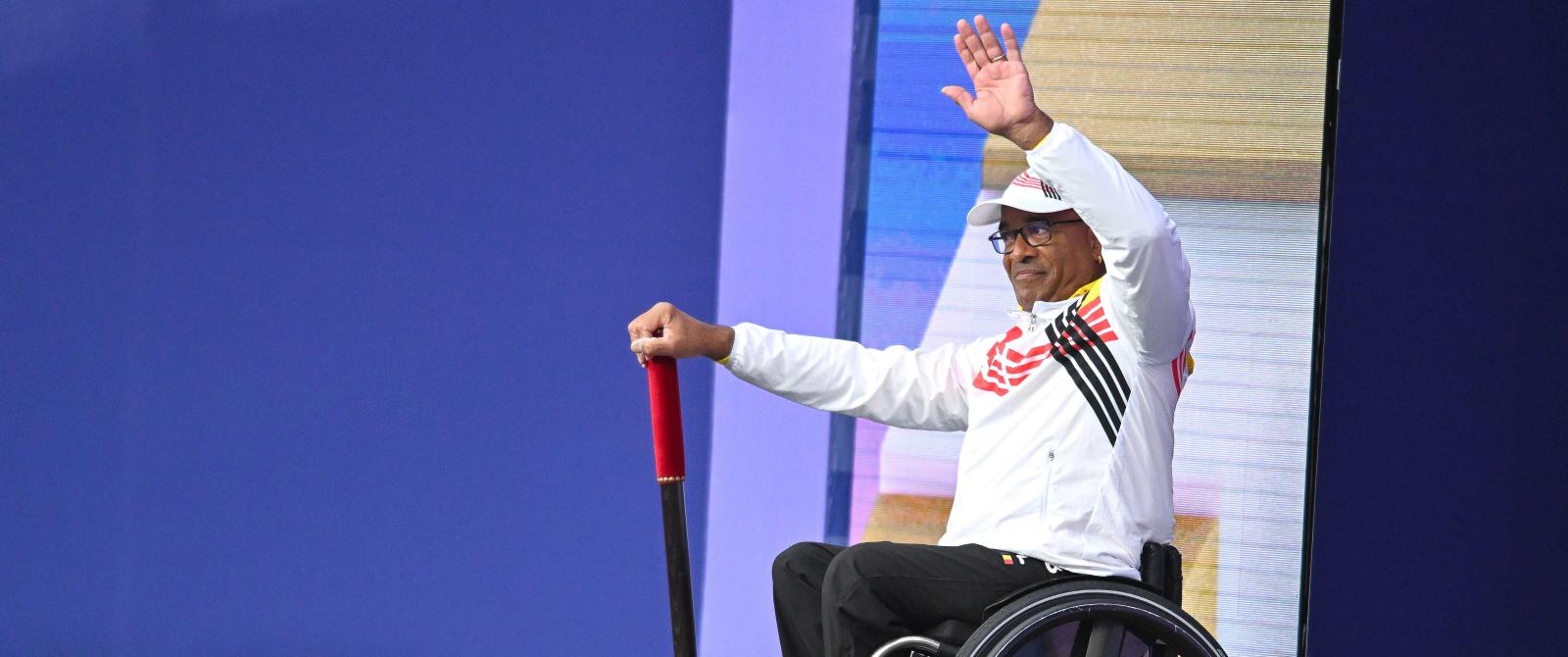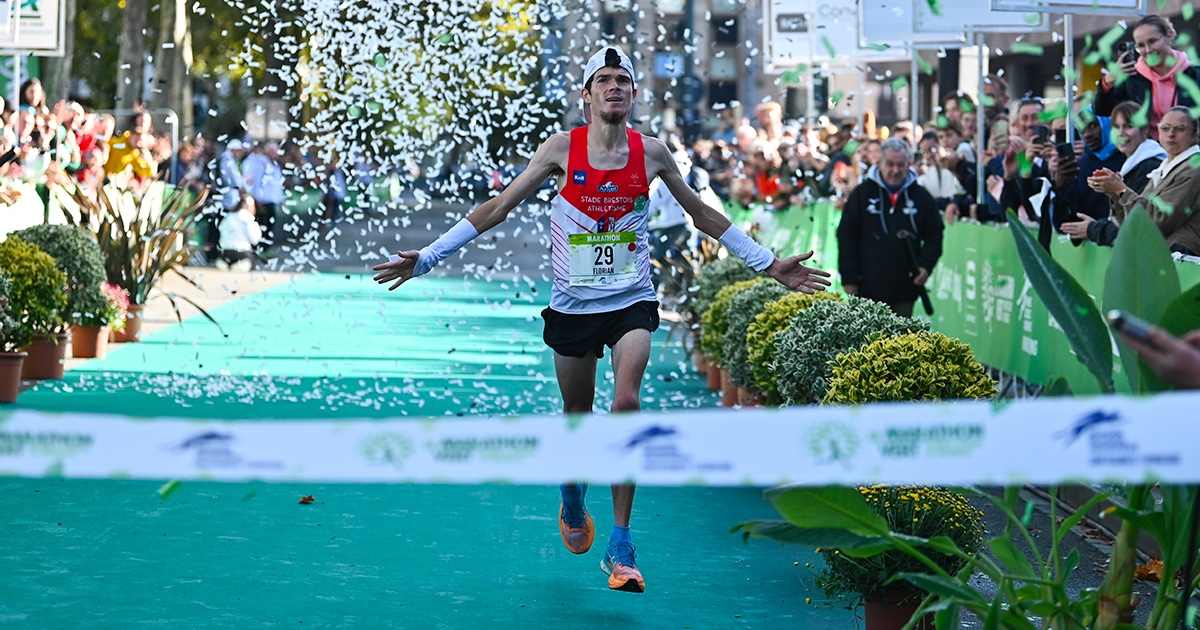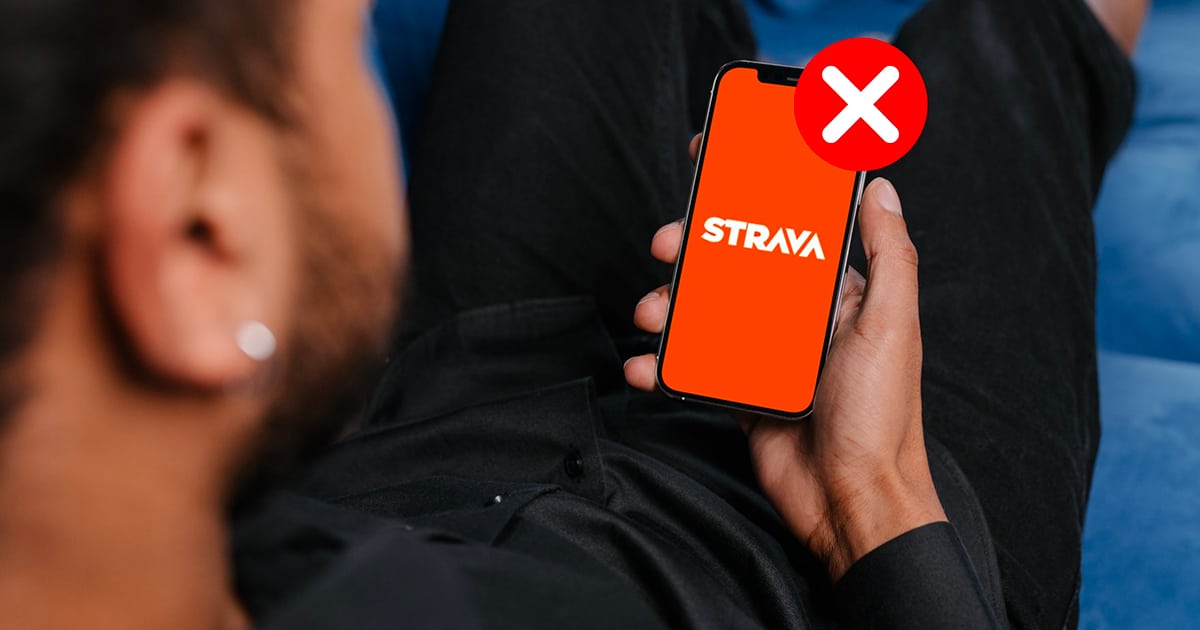Road races: when massive attendance becomes a danger
In recent years, running, especially road races, has attracted more and more athletes. According to the 2024 Running Observatory, 12.5 million French people participate in this sport, accounting for 25% of the French population. It has now become almost more challenging to secure a race bib for certain events than a concert ticket. As a result, the number of enthusiasts at the starting lines is astonishing, dangerous behaviors are increasing, and accidents are becoming frequent despite the organizers’ ever-increasing precautions. Elite female athletes are particularly exposed to this phenomenon, as seen in the chaos of the 10 km race at the Lille Half Marathon, on March 16.
“I could hear the people who fell first scream because they ended up underneath others”
Margot Dajoux
“I could hear the people who fell first scream because they ended up underneath others,” recalls Margot Dajoux, European junior champion in mountain running and multiple French champion in cross-country, mountain running, 2000m steeplechase, and 5 km road races. The 19-year-old from Clermont-Ferrand, France, was caught in the starting rush of the 10 km race in Lille, alongside 40 other registrants. There were 5000 runners in the 10 km race.
With no less than 10,000 people gathered for this event, Lille’s prestigious races are among France’s most densely populated and attract runners’ ambition. Many elite athletes traveled across France to the Capital of Flanders to smash their personal records on a billiard-like course with astounding density. The events were sold out months in advance. For some, the goal was to achieve the minimum times for the European Road Championships, like Anaëlle Guillonnet, a regular on national podiums in cross-country and track races. The athlete from Décines Meyzieu Athlétisme had to abandon the race shortly after getting caught in this chaos.
“Once the barriers were removed and all the starting pens merged, it pushed incredibly hard; I felt like my feet weren’t touching the ground. As soon as the starting gun went off, we were pushed even harder, and since we, the elite women, were in the third or fourth line, there were people ahead of us, so it took us a while to move forward, and it caused a fall.”
The Clermont Auvergne Athlétisme athlete shares the same observation. “Before the starting gun, there was a crowd movement. The organizers made us step back to stay behind the line because people had already moved too far forward. I knew it was going to be terrible. There was the start and then the fall because people were forcing their way through. I couldn’t avoid it because the crowd on the ground took up nearly the entire width of the road.”
| Incivility, a headache for organizers
Jean-Pierre Watelle, the organizer of the Lille Half Marathon, as well as the prestigious Meeting de Liévin, spoke on this issue. “I organize events to provide the best possible conditions for high-level athletes. When there is a fall at the start of one of our races, we, the organizers, are the first to be disappointed. Even if we set everything up to avoid falls, they happen very often. This can happen even with a starting line with very few people. If I wanted, I could have taken 25,000 runners in Lille. Many events refuse participants for safety reasons.“
He gives the example of the recent French Cross-Country Championships in Challans. Both female and male cross-country runners fell at the start of almost every race, even when the fields consisted of just 300 or 400 enthusiasts. Jean-Pierre Watelle also recalls that the Lille course is widened each year based on the number of registrants.
The organizer laments this incivility:
“What’s unbearable are all these people who don’t respect anything, who absolutely want to move ahead by pushing. Some are ready to climb over barriers. We sent one person to the hospital because they scraped their hand trying to access a pen where they had no business being. It’s madness; we need almost military means to prevent chaos.“
Jean-Pierre Watelle
Jean-Pierre Watelle also reveals spending hours verifying performance credentials because some runners register with false references, sometimes with a three-minute difference from their actual time. A scourge that complicates the event’s organization and proper pen distribution.
| The challenge of selection
For Anaëlle Guillonnet, placing herself at the front was essential. The middle-distance runner aimed for the crucial minimum times for the European Road Championships. For selection, it’s the gun time that counts, not the chip time, which only starts when crossing the starting arch. The French under-23 cross-country short course champion of 2021 trains alongside Sarah Madeleine, who equaled the French 10 km record last January at the Prom’Classic in Nice (31’15”). She didn’t break it, thinking she might have, and mentioned a possible difference between gun and chip time.
“I understand that men run faster than us, and it’s normal for them to overtake us. But for the women, it was crucial not to be far from the line and not to lose crucial seconds at the start,” continues Anaëlle Guillonnet. “There was the selection challenge, the minimum times (32’30”), and it wasn’t just about chasing personal records. If that were the case, we would have stayed back,” explains Bastien Perraux’s student. “These are situations that become dangerous because of some runners, while we are just there for our passion, to push ourselves, but everyone is willing to do anything to gain even a second.“
Such accidents are not new. In December 2022, a similar incident occurred during the 10 km race at the Corrida du Houilles, during the 50th edition of the event. A massive fall caused reactions and concerns. In January 2023, the chaotic start of the 10 km race in Valencia, Spain, also left a mark. The 4th place finisher of the 3000m steeplechase final at the Paris 2024 Olympic Games, Alice Finot, suffered from the commotion, along with many other female athletes trampled in the stampede at the starting gun. She had previously warned about the dangerous behavior of some athletes willing to do anything to avoid losing a few seconds.
| Women, the primary victims of falls
Athletes logically aim for personal bests after months of training. Every second counts, creating tension, especially in the fastest waves. Falling in the middle of a crowd of frantic runners means risking not being able to get up. This was the experience for female athletes in Lille.
“I stayed down for about twenty seconds, and I had to try five or six times before I could stand up. I couldn’t because I was kicked by runners passing by. I had side stitches afterward because I was trampled on the stomach, neck… I didn’t enjoy it, and I wasn’t thinking about anything during the race, I was in shock.,” explains the Clermontoise Margot Dajoux.
The Lyonnaise Anaëlle Guillonnet also mentions a painful moment. “With so many people, it was impossible to get up. I felt like I was in a washing machine. Either people have no qualms and trample us, or they fall on us because they don’t see the runners on the ground ahead of them. I stopped trying to get up, wrapping my arms around my head for protection and waiting. I thank the lady who helped me and the runners who shielded me from others. I had scrapes everywhere, pain, knees bleeding, and I hit my head on the ground, resulting in a huge bruise on my chin.”
Female athletes, often with smaller physiques and less pronounced strength than men, are particularly affected by the jostling and injuries they cause. Yet, holding women-only races does not seem to be the solution, as it would impact performance and visibility for women’s sports. Road events offer an excellent opportunity for female athletes to set personal bests, thanks to a high density of runners, while benefiting from significant media coverage.
| Running with men, an opportunity to perform
This is highlighted by the Breton Laëtitia Bleunven, who is also among the best French middle-distance runners. The athlete emphasizes the value of road races, allowing everyone to benefit from a density that elevates performance. “It’s important that we can share these moments, which are very rich in human and sporting terms. The goal is to find solutions together, runners, organizers, and spectators. Our common goal, is to achieve great performances,” emphasizes the runner from Stade Brestois Athlétisme.
“We shouldn’t be deprived of this opportunity and the richness of running with men. It’s like having pacers throughout the race. We need this density and stimulation to exceed ourselves. There’s also a lot of supportive spectators, which is exceptional. I always enjoy running in Lille.”
Laëtitia Bleunven
She further notes that the race organizers “provide incredible work,” and that the problem primarily lies with unscrupulous participants. For the passionate runner, this Lille running festival is a must-see and memorable event to perpetuate.
“We all want to compete, but it’s crucial to do so in a respectful and considerate manner towards others. We run together, not to harm each other. In France, beautiful events are emerging. Behaving like this discourages the hard-working organizers. We experience very strong emotions thanks to these events. This sport brings together a lot of people. At the starting line, we have the chance to be with people going to the Olympics and others who are just starting out. It’s this richness we must preserve.”
| No magic solution
Among the suggested solutions, several are proposed. The first is to start the waves a few seconds apart, to smooth traffic and avoid jostling. However, this risks frustrating those at the back. The second is to place participants in pens solely based on their personal records, regardless of whether they are men or women. In this case, women with a 35-minute mark for 10 km would be placed with men who have run that time. For runners seeking European or world minimums, this solution might disadvantage them by starting far from the line.
Jean-Pierre Watelle considered this solution but risks women being drowned in the crowd and not in the best conditions to perform. Also, having women start 30 seconds before men might be even worse, according to the director of the Hauts-de-France Athletics League. “The girls would be overtaken by a massive group. The best solution is two separate lanes that merge after 800 meters, for example, but the location must allow for it, which wasn’t the case in Lille this year.”
“The solution is far from easy to find, even though there are alternatives,” lists the organizer. For this edition, a sub-elite pen was established for better distribution. Only 40 athletes had an elite bib. The event’s manager has already considered a drastic solution: forming three lines of top male athletes, three lines of top female athletes, and starting them before the crowd. Frustrated by incivility, the organizer thought about restricting the races to the discipline’s best. A possibility that risks dividing runners. Organizers find themselves at an impasse.
Limiting the number of registrants is essential. The Lille Half Marathon rejects many runners, even elites with records under 29 minutes. “We don’t pursue a ‘more is better’ policy, as often criticized,” defends the organizer. “We’re accused of taking in more runners, but we refuse them, and when we do, we get insulted. I can’t take more if I find it too dangerous. With a bib at 22 euros, we’re not here to make money.”
| Running, an individual sport that brings people together
Laëtitia Bleunven appreciates the supportive athletes who helped her get up and continue. She finished the race close to her personal best, a frustrating time due to her fall. “Someone helped me up, encouraging me. I heard, ‘You’re standing, now move forward.’ When I covered some distance, a runner encouraged me to follow, asking my time goal.” The Breton highlights the inherent camaraderie in running. “I was touched by this kindness, which helped me hang on and aim for a time close to my personal best.”



